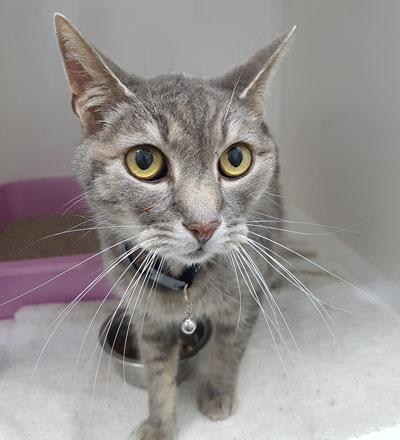 Due to improvements in nutrition, veterinary and home care, cats are living a lot longer than they did twenty to thirty years ago. In the past when a cat reached the age of 13 years old, we believed them to be really old. This is definitely no longer the case. We see several cats that are now reaching ages in excess of twenty years. Cats also tend to age a lot more gracefully than dogs and so it is not always easy to tell when they are starting to struggle or are showing signs of illness.
Due to improvements in nutrition, veterinary and home care, cats are living a lot longer than they did twenty to thirty years ago. In the past when a cat reached the age of 13 years old, we believed them to be really old. This is definitely no longer the case. We see several cats that are now reaching ages in excess of twenty years. Cats also tend to age a lot more gracefully than dogs and so it is not always easy to tell when they are starting to struggle or are showing signs of illness.
What physiological and behavioural changes can you expect with your ageing cat?
As cats age, their sense of smell and taste becomes less sensitive. This means that food may need to smell a little stronger in order to appear more palatable to the cat. They also have a decreased ability to digest fat and protein so food needs to provide adequate nutrition but not be too rich. As well as sight, their hearing also diminishes and so extra care is needed to ensure they are out of the way of vehicles or they may need to be brought to their food.
Are there any changes in routine care for your older cat?
- Pedicures – elderly cats are less able to retract their claws and they can become stuck on furniture and bedding. The claws also thicken with age. It is important to check them weekly to ensure that the nails are not growing into the paw pads. Some cat may need regular trimming. With advice and some training from the vet, this can be done at home and may help reduce the stress of a journey to the vet or parlour.
- Grooming – Ageing cats may struggle to groom themselves due to athritits. Long haired cats, in particular, may need to be brushed several times a week to avoid matted fur. Their eyes may need to be cleaned occasionally with moist cotton wool. It is important to check around their “bottom” (perineum – the area around the anus and rectum) to ensure that there are no faeces stuck and there isn’t matted fur. Some cats may need to be trimmed.
- Hairballs – The digestive system in older cats can be a little sluggish and so problems like hairballs can become more common. There are several different options when it comes to hair ball control such as food or supplements. If you are unsure if your cat is vomiting or bringing up hairballs then it is important to consult the veterinarian.
- Toilet habits – It is advisable to provide an indoor litter box, even if your cat normally urinates and defecates outside. As older cats are more slow and sedentary, they may not want to go very far and they are also more sensitive to the cold and wet. An indoor litter box also makes monitoring the frequency of urination and consistency of stool easier. An increase in urination may be a sign of an underlying condition such as diabetes or kidney failure. Older cats may also struggle with constipation and may need supplements or a change in food. In severe cases, the veterinarian may need to perform an enema.
- Dental disease – As cats age, dental issues such as gingivitis (inflamed gums), plaque build-up and loose teeth may become more of a problem. This may affect their appetite, their ability to eat, and may cause them pain. Bad breath (halitosis), drooling, loss of appetite, tooth chattering and pawing at the mouth may all be an indication that there is an underlying dental issue that may need attention. If you are in any doubt then consult the veterinarian.
How often should you take your ageing cat to the vet?
Unlike the liver, the kidneys do not have the capacity to regenerate, and therefore once a certain percentage of the kidneys have been damaged, there is no way of repairing it. Therefore it is so critically important that these tests be done at an earlier age, or stage of kidney disease, in order to help protect the functional part of the kidneys.
The following sigs are an indication that your cat should be seen by the vet:
- Any loss of or change in appetite
- Weight loss
- Change in water intake- usually drinking more than normal
- Struggling to jump, lameness or stiffness
- Any lumps or bumps
- Decreased energy levels
- Balance problems
- Difficulty in passing urine or faeces or messing in abnormal areas
- Disorientation or distress or any change in normal behaviour
- A coat which becomes dull
- Any other signs of disease like vomiting or diarrhoea, change in vision, bad breath, weakness or anything else which is out of the ordinary
Detecting certain diseases early often helps improve the success of treatment so it is important to be on the lookout for any changes in your cat. Older cats will need more time and attention but with advances in veterinary medicine and care, they should be able to live their last few years in comfort and relatively free from stress.
© 2018 Vetwebsites – The Code Company Trading (Pty) Ltd


